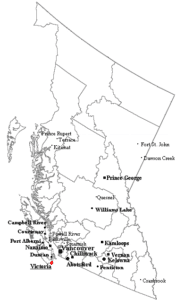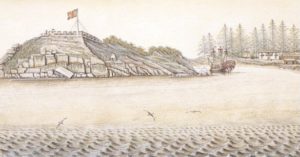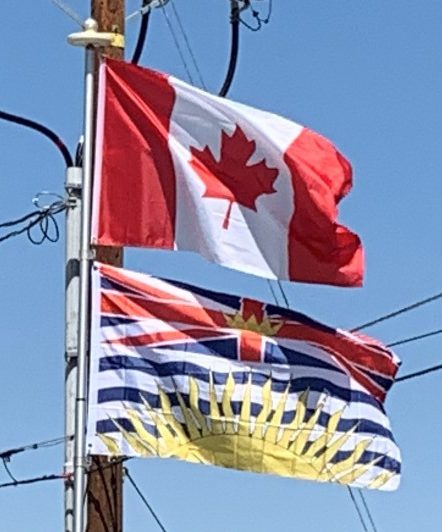
Ultimately, the Columbia in the name British Columbia is derived from the name of the Columbia Rediviva, an American ship which lent its name to the Columbia River and later the wider region; the Columbia in the name Columbia Rediviva came from the name Columbia for the New World or parts thereof, a reference to Christopher Columbus.
History:
Early History:
The area now known as British Columbia is home to First Nations groups that have a deep history with a significant number of indigenous languages. There are more than 200 First Nations in BC. Prior to contact (with non-Aboriginal people), human history is known from oral histories of First Nations groups, archaeological investigations, and from early records from explorers encountering societies early in the period.
The arrival of Paleoindians from Beringia took place between 20,000 and 12,000 years ago. Hunter-gatherer families were the main social structure from 10,000 to 5,000 years ago. The nomadic population lived in non-permanent structures foraging for nuts, berries and edible roots while hunting and trapping larger and small game for food and furs. Around 5,000 years ago individual groups started to focus on resources available to them locally. Thus with the passage of time there is a pattern of increasing regional generalization with a more sedentary lifestyle. These indigenous populations evolved over the next 5,000 years across a large area into many groups with shared traditions and customs.

Contact with Europeans brought a series of devastating epidemics of diseases from Europe the people had no immunity to. The result was a dramatic population collapse, culminating in the 1862 Smallpox outbreak in Victoria that spread throughout the coast. European settlement did not bode well for the remaining native population of British Columbia. Colonial officials deemed colonists could make better use of the land than the First Nations people, and thus the land territory be owned by the colonists. To ensure colonists would be able to settle properly and make use of the land, First Nations were forcibly relocated onto reserves, which were often too small to support their way of life. By the 1930s, British Columbia had over 1500 reserves.
Fur Trade and Colonial Era:
The arrival of Europeans began around the mid-18th century, as fur traders entered the area to harvest sea otters. While it is thought Sir Francis Drake may have explored the British Columbian coast in 1579, it was Juan Pérez who completed the first documented voyage, which took place in 1774. Juan Francisco de la Bodega y Quadra explored the coast in 1775. In doing so, Pérez and Quadra reasserted the Spanish claim for the Pacific coast, first made by Vasco Núñez de Balboa in 1513.

The explorations of James Cook in 1778 and George Vancouver in 1792–93 established British jurisdiction over the coastal area north and west of the Columbia River. In 1793, Sir Alexander Mackenzie was the first European to journey across North America overland to the Pacific Ocean, inscribing a stone marking his accomplishment on the shoreline of Dean Channel near Bella Coola. His expedition theoretically established British sovereignty inland, and a succession of other fur company explorers charted the maze of rivers and mountain ranges between the Canadian Prairies and the Pacific. Mackenzie and other explorers—notably John Finlay, Simon Fraser, Samuel Black, and David Thompson—were primarily concerned with extending the fur trade, rather than political considerations. In 1794, by the third of a series of agreements known as the Nootka Conventions, Spain conceded its claims of exclusivity in the Pacific. This opened the way for formal claims and colonization by other powers, including Britain, but because of the Napoleonic Wars, there was little British action on its claims in the region until later.
